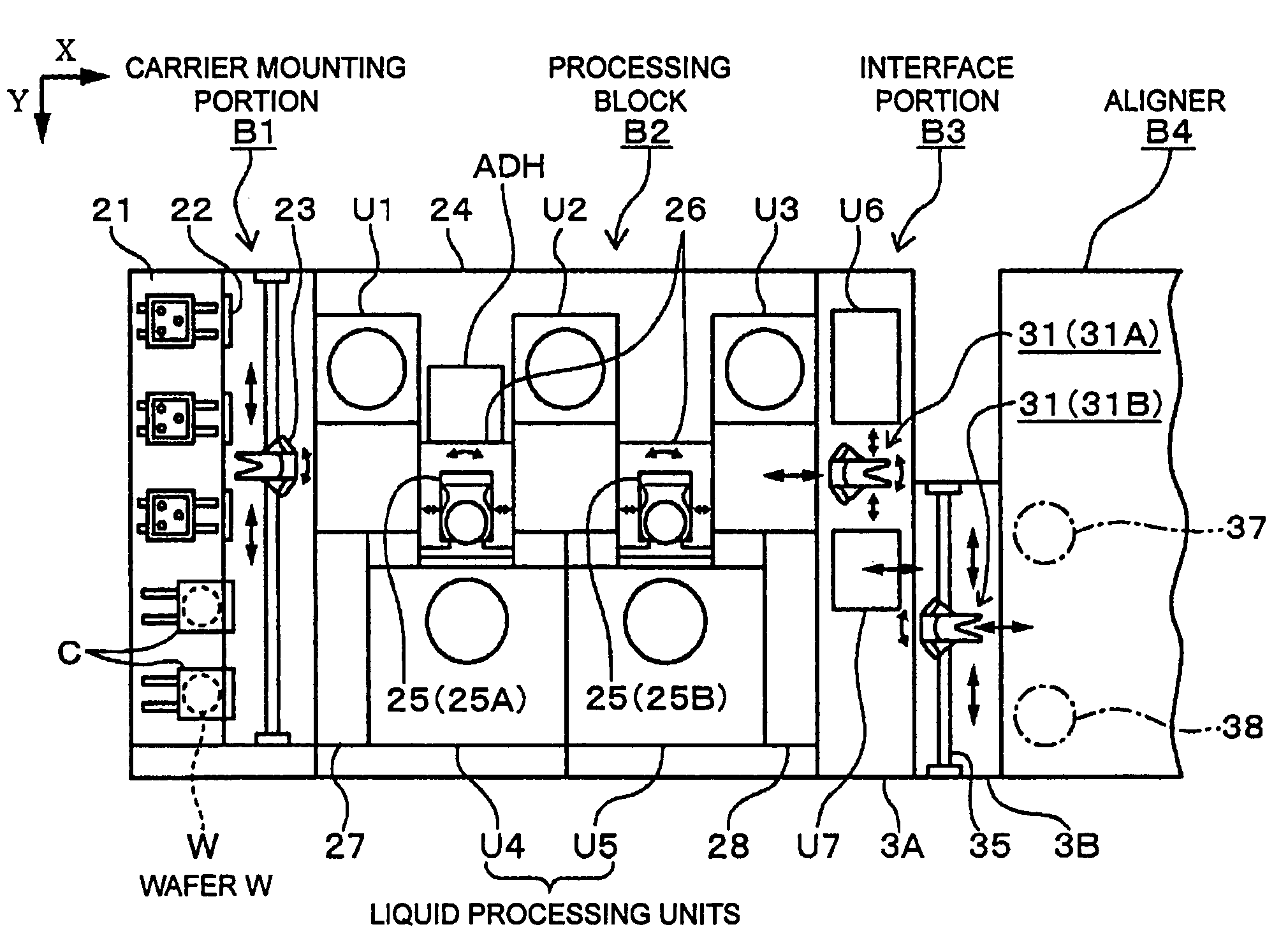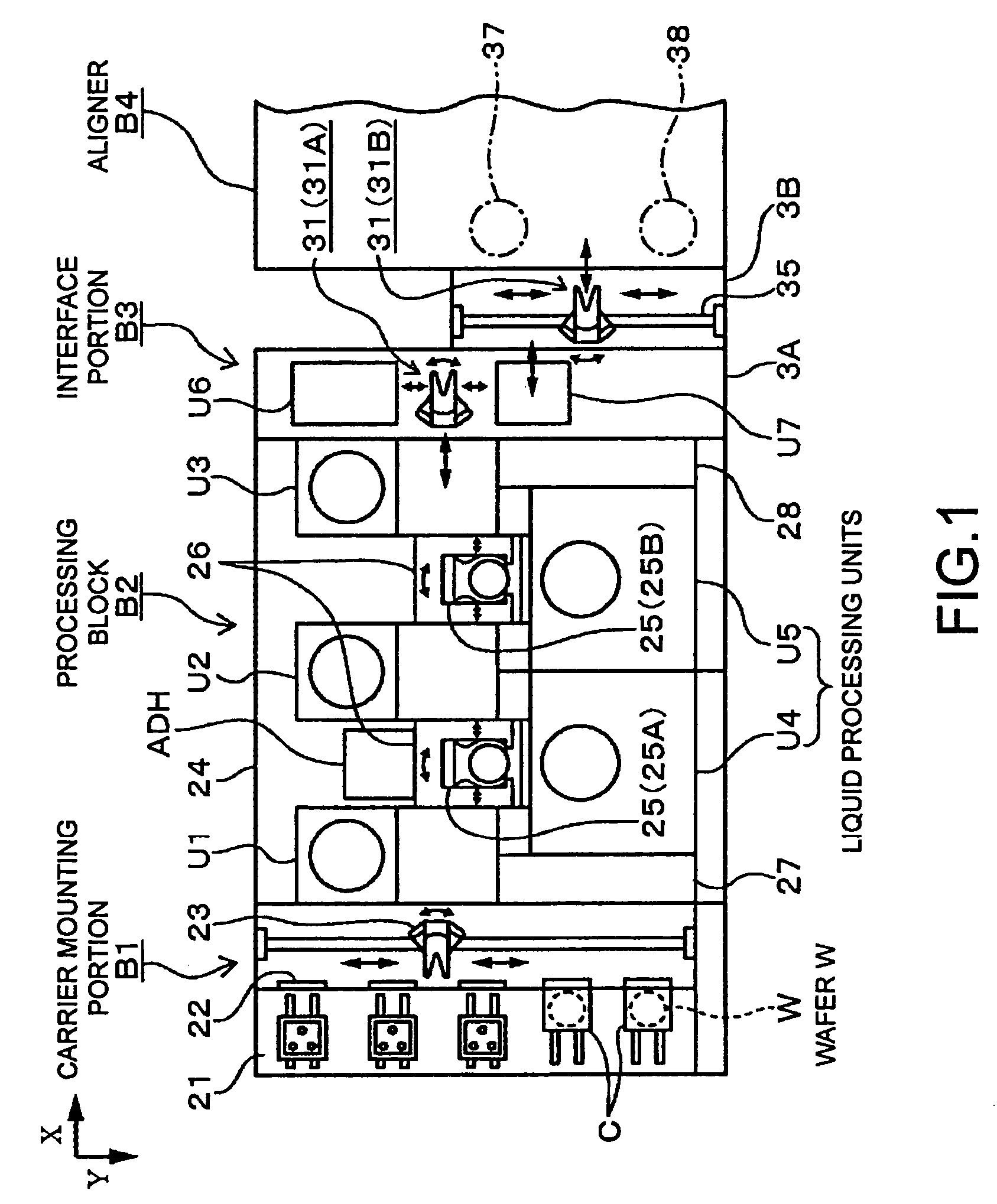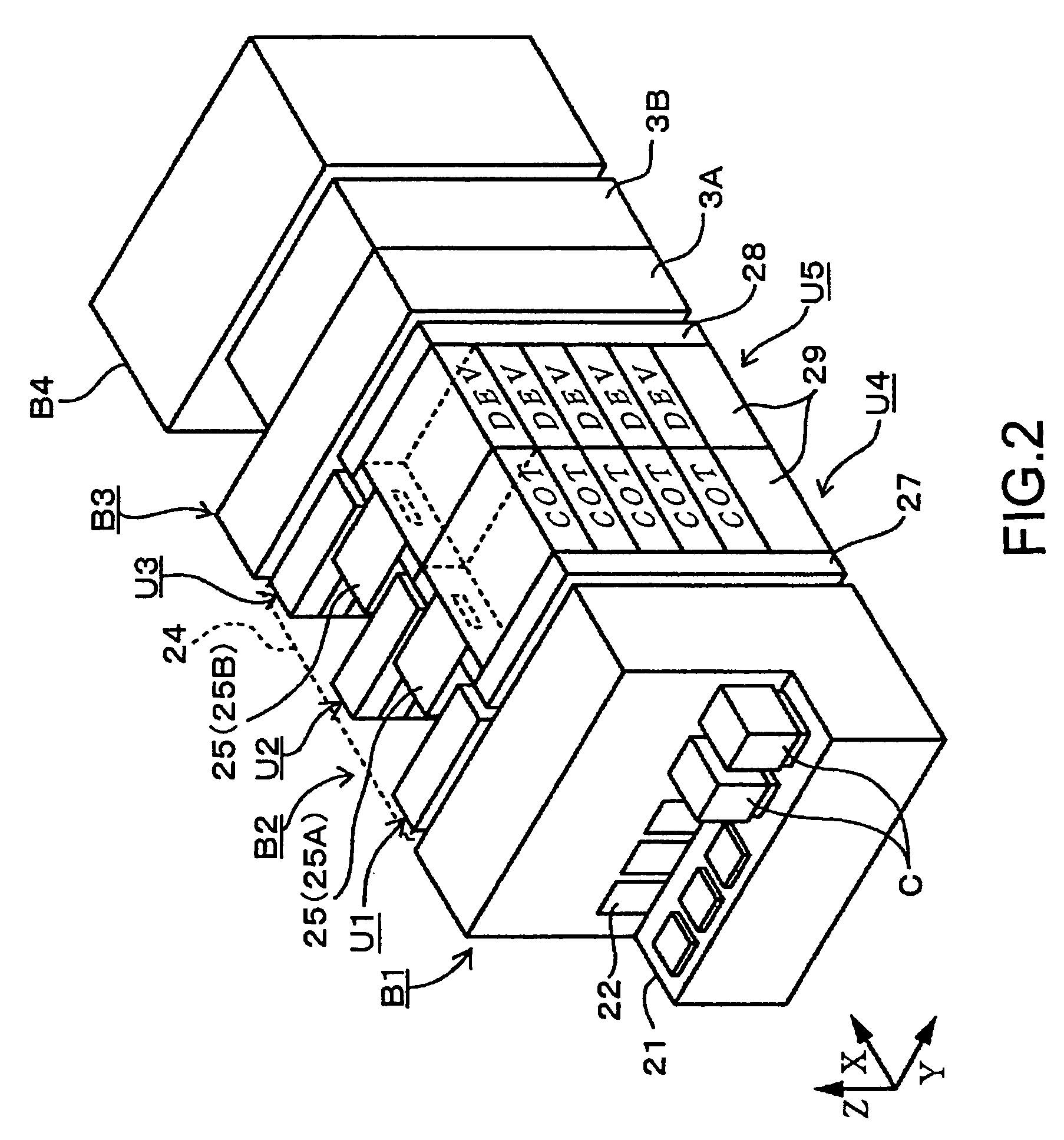Substrate processing system, coating/developing apparatus, and substrate processing apparatus
a substrate processing and substrate technology, applied in the direction of photomechanical equipment, instruments, photosensitive material processing, etc., can solve the problems of inability to meet the throughput of the aligner, adverse effects of the pre-heat elapse time on the result of the developing process, and deterioration of the yield of the final produ
- Summary
- Abstract
- Description
- Claims
- Application Information
AI Technical Summary
Benefits of technology
Problems solved by technology
Method used
Image
Examples
Embodiment Construction
[0052]Next, a resist pattern forming apparatus to which a substrate processing system according to an embodiment of the present invention is applied will be described. The resist pattern forming apparatus as the coating and developing apparatus according to the embodiment of the present invention is composed of the coating and developing apparatus and an aligner. FIG. 1 is a plan view showing a resist pattern forming apparatus according to the embodiment. FIG. 2 is a perspective view showing the resist pattern forming apparatus. In these drawings, B1 represents a carrier mounting portion to and from which carriers C each of which airtightly contains for example 13 wafers W as workpieces are loaded and unloaded. The carrier mounting portion B1 has a table 21 on which a plurality of carriers can be placed, an open / close portion 22 formed disposed in a wall surface in the front of the table 21, and a transfer arm 23 that functions as a part of a first transferring means 1 that takes ou...
PUM
| Property | Measurement | Unit |
|---|---|---|
| time | aaaaa | aaaaa |
| temperature | aaaaa | aaaaa |
| elapse time | aaaaa | aaaaa |
Abstract
Description
Claims
Application Information
 Login to View More
Login to View More - R&D
- Intellectual Property
- Life Sciences
- Materials
- Tech Scout
- Unparalleled Data Quality
- Higher Quality Content
- 60% Fewer Hallucinations
Browse by: Latest US Patents, China's latest patents, Technical Efficacy Thesaurus, Application Domain, Technology Topic, Popular Technical Reports.
© 2025 PatSnap. All rights reserved.Legal|Privacy policy|Modern Slavery Act Transparency Statement|Sitemap|About US| Contact US: help@patsnap.com



